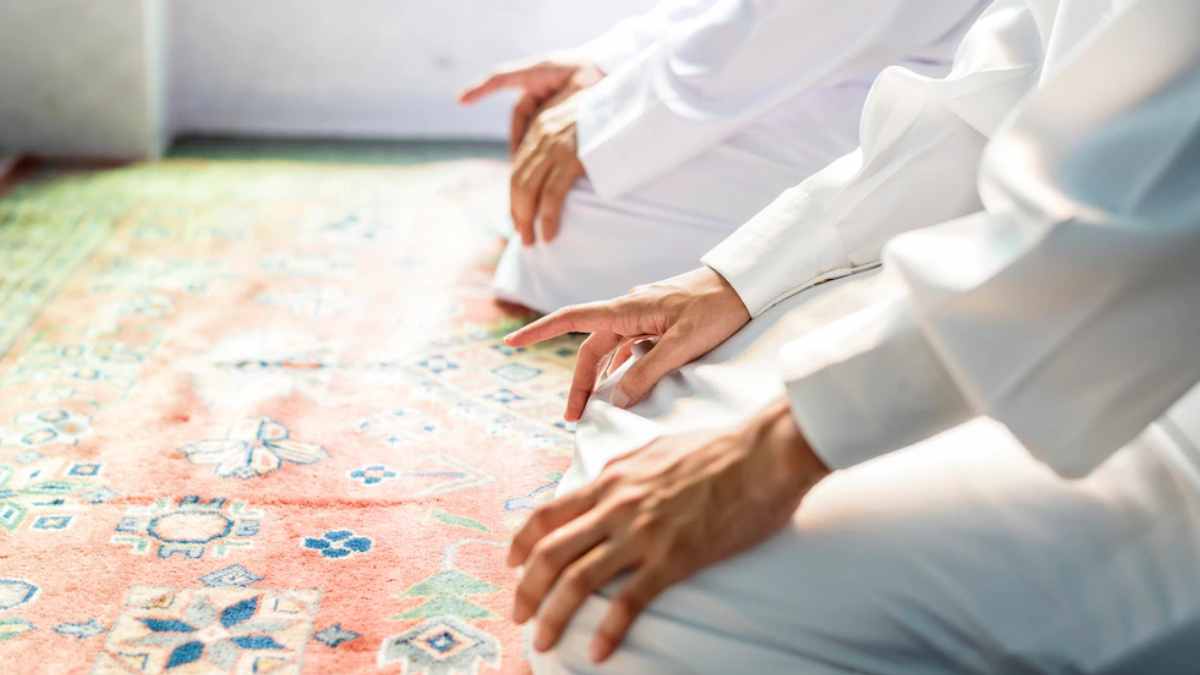Ramadan, the Holy Month. An ordeal followed 1.9 billion Muslims across the globe. An entire month of fasting from dawn till dusk, studying of Quran rigorously, increase in generosity, charity, and prayers. Such is the intense ordeal followed by Muslims during the month of Ramadan. Ramadan revolves around the Five Pillars or Duties of Islam, fasting, prayer, pilgrimage, the testimony of faith, and charitable giving. “Eid-ul-Fitr” marks the end of Ramadan.
At the heart of Islamic life, mosques are the place of worship for every Muslim. They not only act as a medium to pray but also a place for public expression and education. Also, a center for events during the Holy Month. Let’s dig deep and look at the top 5 beautiful mosques in UAE and KSA, where one can get spiritually closer to the Almighty himself.
Sheikh Zayed Grand Mosque – Abu Dhabi

Located in the “Land of the Gazelle,” Abu Dhabi. Welcoming more than 5 million visitors and tourists every year, it is the largest mosque in all of UAE. Sheikh Zayed Mosque is truly a marvellous and breath-taking feat achieved by the architects. Featuring glorious lily-white marble walls, a staggering 24-karat gold gilded chandeliers, and the largest hand-knotted carpet, a beautiful place indeed.
It is nearly impossible to speak about the mosque and its spiritual and religious aspects without talking about the events during the holy month.
Ramadan Lanterns:
World’s renowned Quran reciters in the Islamic world are gathered to guide worshippers during the prayers of Taraweeh and Tahajjud throughout the Holy Month of Ramadan.
Our Fasting Guests: “Our Fasting Guests” is an initiative launched by the SZGMC to feed and distribute over 750,000 Iftar meals during Ramadan.
Sultan Qaboos Grand Mosque – Muscat

An architectural wonder located in the capital city of Muscat is one of the largest mosques in Oman. The mosque is aesthetically pleasing to any passer-by and visitor. Dominating the skyline of the city of Muscat are the five minarets, which also represent the five pillars of Islam. Hundreds of people gather at this mosque to break their fast and offer prayers during the Holy Month.
Sultan Qaboos Grand Mosque welcomes and allows non-Muslim visitors inside the prayer hall, making it one of the only few mosques to do so in Oman. However, non-Muslim and tourists’ visitations are restrictive during Ramadan.
Jumeirah Mosque – Dubai

“Open doors, open minds” is the ideology revolving around the mosque. Jumeirah Mosque is an iconic landmark in Dubai that welcomes visitors of all faiths to learn and admire the Islamic culture and the sheer beauty of the mosque.
The Iftar Tour:
A Muslim knows the importance of Iftar during the month of Ramadan. Now, so can you! Through a special tour arranged by The Sheik Mohammed Center for Cultural Understanding, a tourist or a non-Muslim can learn more about the tradition of fasting during the Holy Month.
Al Rajhi Grand Mosque:

Considered an architectural marvel, the Al Rajhi Grand Mosque is the largest in all of Riyadh. It was built entirely from donations from the Al Rajhi family, with a capacity of 18,000 in the men’s hall 2,500 in the women’s hall. Al Rajhi Grand Mosque is more than a place of worship, it is also an educational center, a place for social and religious gatherings and events like Eid. Friday prayers are in seven different languages, and recitations are displayed on the LCD screens for the hearing-impaired people.
Non-Muslims are not allowed inside the mosque, but it does not make it less of a tourist place. Hundreds still visit the mosque to get a glimpse from the outside, a testimony to the grandeur of the Al Rajhi Grand Mosque.
Masjid al-Haram – Mecca

Now, to the mosque, everyone has been waiting for – “The Great Mosque of Mecca.” Masjid al-Haram is the largest mosque and is also one of the most ancient ones in the world. The holy mosque was built to enclose the holiest shrine in Islam, the Kaaba. Muslims from all around the world face the Kaaba or the black stone while offering prayers. Kaaba is believed to be constructed by Prophet Ibrahim and his son, Ismail.
One of the five pillars of Islam is Hajj, which requires every Muslim to seek pilgrimage to the holy mosque of Mecca. Hajj is considered to be a religious obligation for every Muslim. The memorable journey requires spending five days in Mecca.
Day One –
Day one is about preparing oneself before entering Irham, a spiritual state of simplicity and devotion. Pilgrims wash their bodies and dress in Irham clothing. They recite the Talbiyah and then perform the Welcome Tawaf – going around the Kaaba seven times in a counter clockwise direction.
Day Two –
Pilgrim’s travel 20kms to Arafat and pray in the Arafat plain or Jabal Al Rahma. They then head to Muzdalifah at sunset, spending a night there. Also, to collect stones and pebbles.
Final Days –
After returning to Mina. Pilgrims throw stones and pebbles at three-pillar sites. They then offer a sacrificial animal, which marks the beginning of Eid al-Adha. Pilgrims must continue to pelt the pillars once for the next two to three days of their stay. They perform the final Tawaf and Say before leaving Mecca and ending their remarkable journey.









